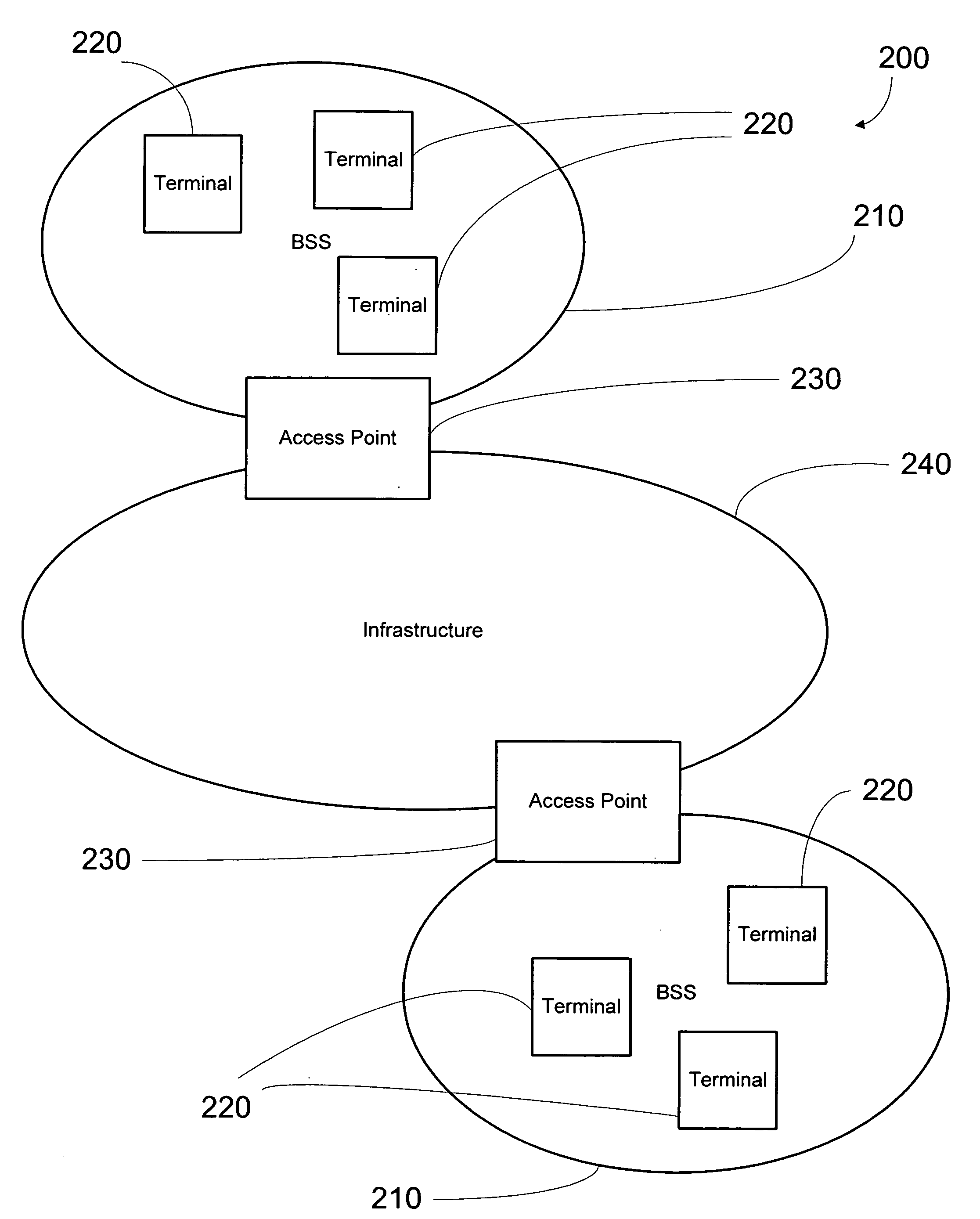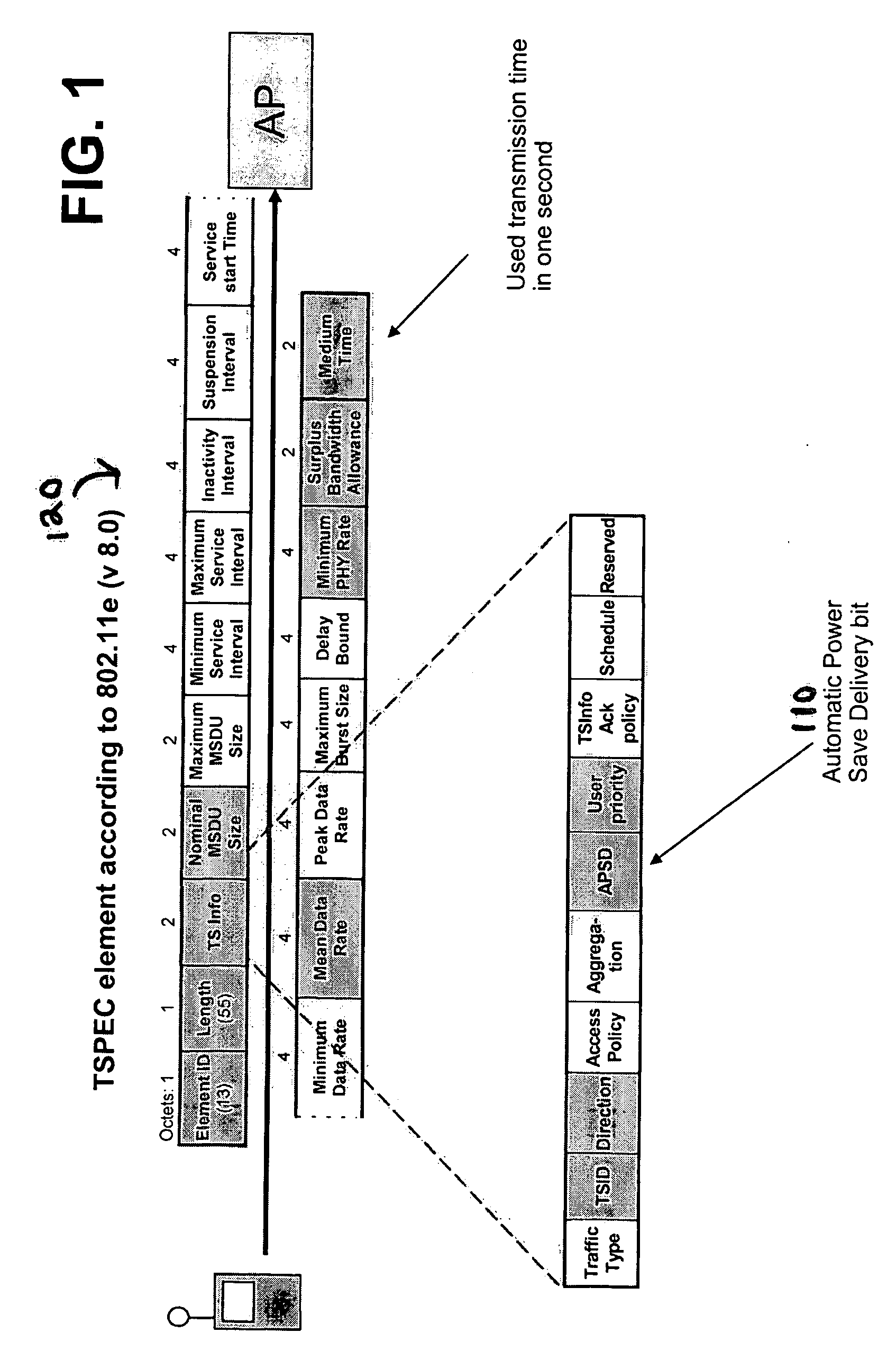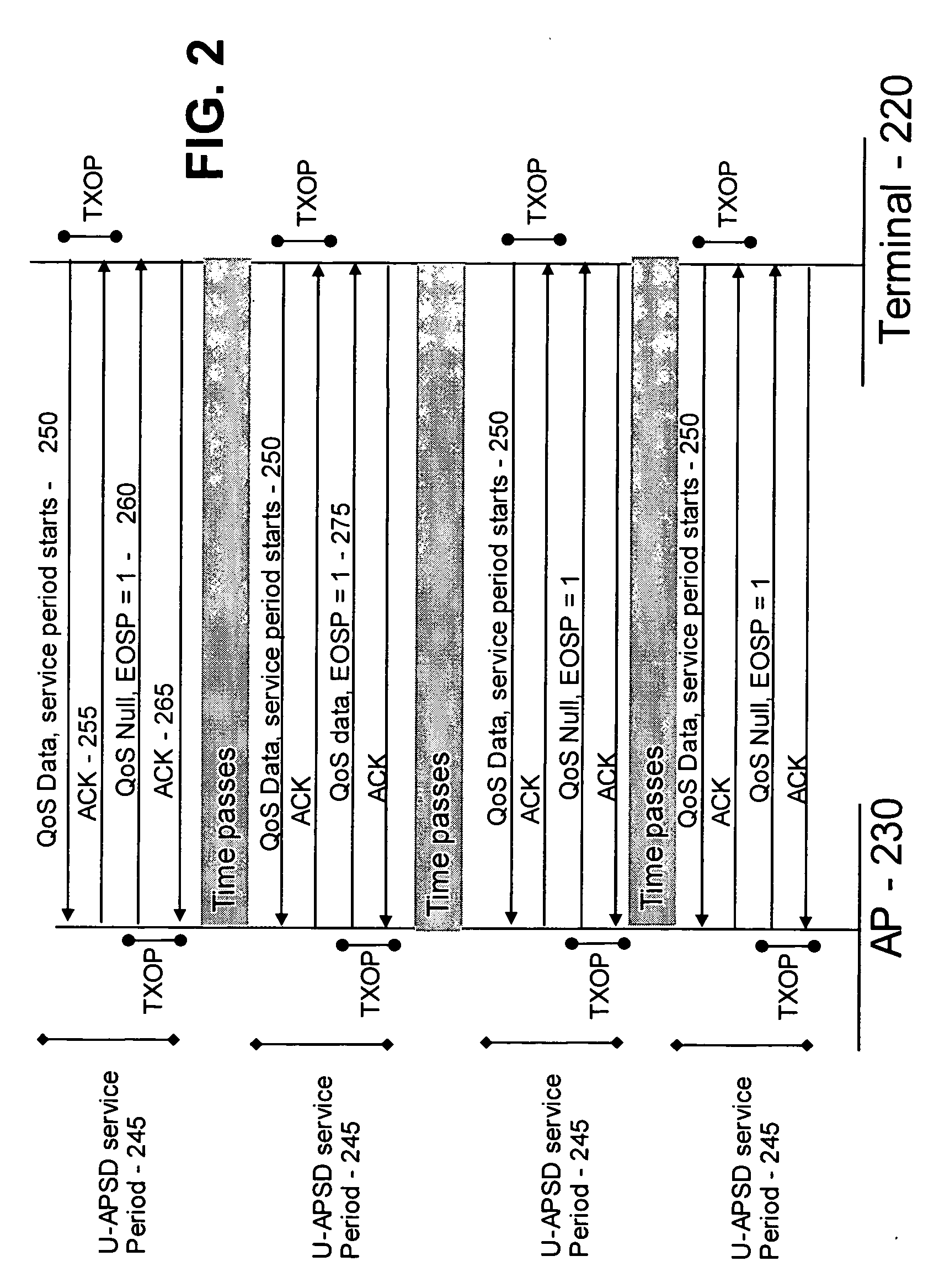Power consumption reduction logic for unscheduled APSD and real time services
a power consumption reduction and real-time service technology, applied in data switching networks, wireless commuication services, high-level techniques, etc., can solve the problem of more rarely uplink frame transmission, and achieve the effect of reducing the amount of unnecessary unscheduled apsd service periods, reducing the overall traffic load, and reducing power consumption
- Summary
- Abstract
- Description
- Claims
- Application Information
AI Technical Summary
Benefits of technology
Problems solved by technology
Method used
Image
Examples
Embodiment Construction
[0031]FIG. 3 is a representation of the components of an extended service set 200 in an 802.11 e wireless network. The extended service set 200 comprises a plurality of basic service sets 210, each of which includes a plurality of stations or terminals 220 and an access point 230. The access point 230 of each basic service set 210 is operatively connected to a distribution system 240, also referred to as network infrastructure.
[0032]FIGS. 4 and 5 show one representative mobile telephone 12 which can serve as a station 220 according to the present invention. It should be understood, however, that the present invention is not intended to be limited to one particular type of mobile telephone 12 or other electronic device. The mobile telephone 12 of FIGS. 4 and 5 includes a housing 30, a display 32 in the form of a liquid crystal display, a keypad 34, a microphone 36, an ear-piece 38, a battery 40, an infrared port 42, an antenna 44, a smart card 46 in the form of a universal integrate...
PUM
 Login to View More
Login to View More Abstract
Description
Claims
Application Information
 Login to View More
Login to View More - R&D
- Intellectual Property
- Life Sciences
- Materials
- Tech Scout
- Unparalleled Data Quality
- Higher Quality Content
- 60% Fewer Hallucinations
Browse by: Latest US Patents, China's latest patents, Technical Efficacy Thesaurus, Application Domain, Technology Topic, Popular Technical Reports.
© 2025 PatSnap. All rights reserved.Legal|Privacy policy|Modern Slavery Act Transparency Statement|Sitemap|About US| Contact US: help@patsnap.com



